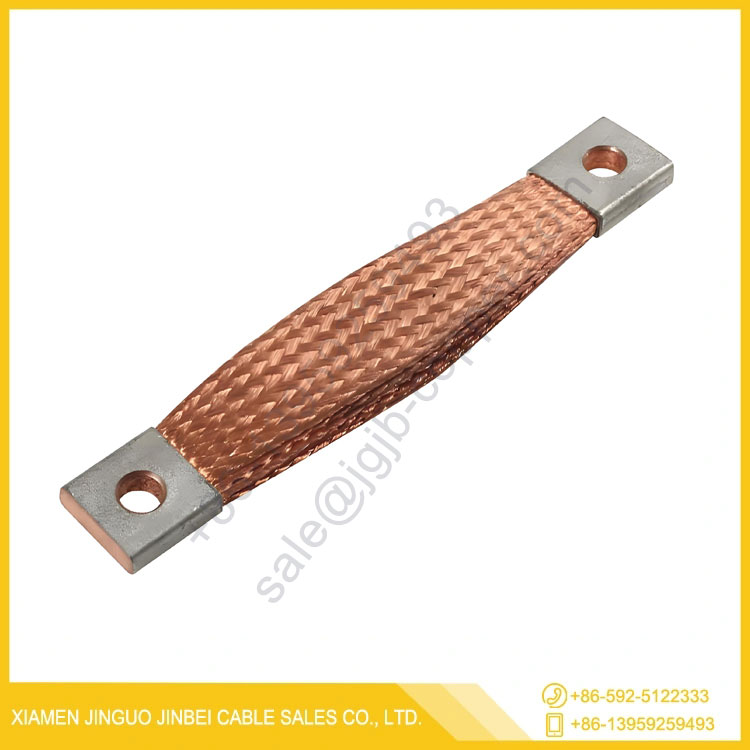How to Properly Maintain and Install Braided Copper Cables
2025-06-06
Braided copper cables are renowned for their strength, flexibility, and superior conductivity, making them a common choice for a wide range of industrial and electrical applications. However, like all materials, braided copper requires proper care and handling to ensure optimal performance and longevity. In this blog, we’ll cover how to properly maintain braided copper cables and how to install them effectively to get the most out of their unique properties.

1. How to Maintain Braided Copper Cables
Proper maintenance of braided copper cables is key to ensuring their long lifespan and uninterrupted performance. Here are a few essential tips for maintaining braided copper cables:
a. Inspect Regularly for Wear and Tear:
Braided copper is a durable material, but over time, the cables can suffer from wear, corrosion, or physical damage. It’s important to regularly inspect the cables, especially in industrial environments where they are exposed to high levels of vibration or movement.
Check for visible frays or signs of damage to the braided structure. Even small frays can impact the overall conductivity.
Look for corrosion or discoloration, which may indicate moisture exposure or long-term wear.
b. Keep Braided Copper Clean:
Dirt, dust, and grime can build up on braided copper cables, affecting their performance. Use a soft, lint-free cloth to wipe the cables down periodically. If there is significant buildup, use a mild cleaning solution and a soft brush to remove any dirt.
c. Avoid Excessive Bending:
While braided copper is flexible, excessive bending or twisting can cause the strands to break or fray, reducing its effectiveness. Always ensure the cables are bent gradually and that they are not under too much tension.
d. Prevent Moisture Exposure:
Although tinned copper is resistant to corrosion, prolonged exposure to moisture or other corrosive elements can still impact the lifespan of braided copper cables. Make sure cables are stored in dry, cool areas and avoid leaving them exposed to rain or extreme humidity.
e. Use Insulated Cables in Harsh Environments:
If you are using braided copper in environments with high levels of heat, moisture, or chemicals, ensure the cables are properly insulated to avoid exposure to these damaging elements.
2. How to Install Braided Copper Cables Properly
a. Choose the Right Cable for the Job:
Before beginning installation, it’s crucial to select the appropriate braided copper cable for your specific needs. Factors like current rating, voltage, and environmental conditions will all play a role in determining the right type of cable. Always check the manufacturer’s guidelines for installation recommendations.
b. Ensure Proper Grounding:
One of the most common uses of braided copper is in grounding systems. When installing braided copper cables for grounding, ensure the cable is securely connected to the grounding rod or system and that the connections are tight to avoid any risk of electrical faults.
c. Use Appropriate Connectors:
When connecting braided copper cables to other components, make sure to use the appropriate connectors or terminals designed for the type of cable you are using. For example, use crimp connectors or soldered connections to ensure a secure and reliable bond.
Avoid over-tightening connections, as this could damage the braided structure.
If you are using a connector for a grounding system, double-check that the connector has good electrical conductivity and corrosion resistance.
d. Ensure Proper Cable Routing:
During installation, take care to route the braided copper cables in a way that minimizes exposure to sharp edges or corners. Sharp bends can weaken the braid and reduce its effectiveness. Use cable ties, clamps, or conduit to secure the cables in place and avoid strain.
e. Use Strain Reliefs:
To prevent stress on the cable, especially at connection points, use strain reliefs at both ends. This ensures that any movement or tension in the cable won’t lead to damage.
f. Test After Installation:
Once the braided copper cables are installed, it’s crucial to test the system for functionality. Run continuity tests to ensure there are no breaks in the connection and that everything is operating smoothly. If you’re using braided copper for grounding, use a multimeter to check the resistance of the grounding system.
3. Troubleshooting Common Issues
Even with proper care, braided copper cables may encounter some common issues. Here are a few troubleshooting tips:
Loose Connections: If you notice a drop in performance, inspect the cable connections. A loose connection can result in reduced conductivity or even failure.
Corrosion Build-Up: In areas with high moisture, corrosion can still form over time. Ensure proper cleaning and re-insulation to prevent this issue from affecting performance.
Physical Damage: Regularly check for any cuts, nicks, or abrasions that may have occurred during installation. These could
compromise the cable’s performance.
Conclusion:
Braided copper cables are an indispensable tool in a variety of industries due to their flexibility, durability, and conductivity. By following proper maintenance and installation techniques, you can ensure that these cables perform at their best, even under demanding conditions. With a little attention to care and the right installation practices, braided copper can continue to be a reliable and long-lasting solution for your electrical and mechanical needs.


